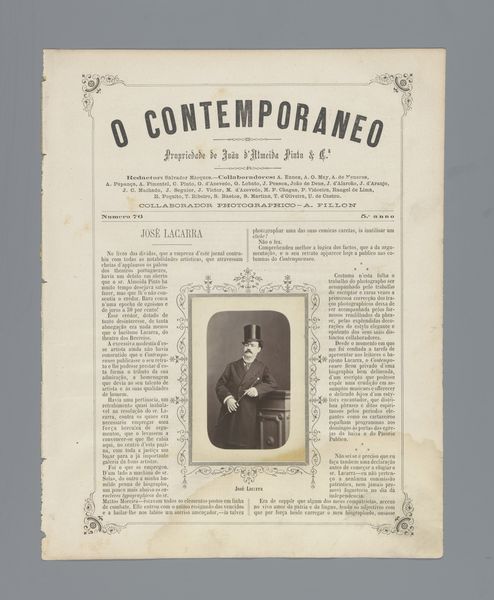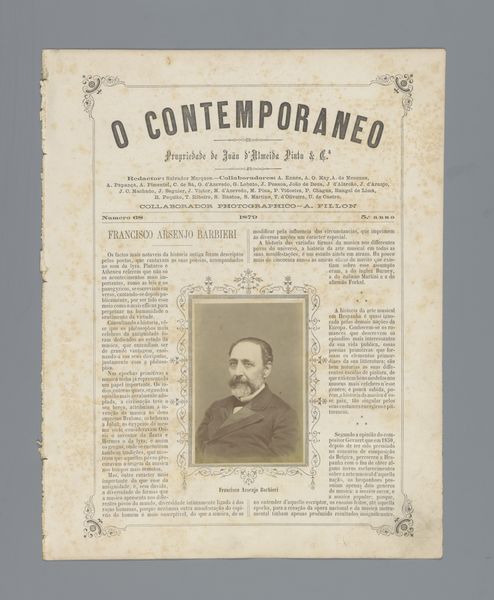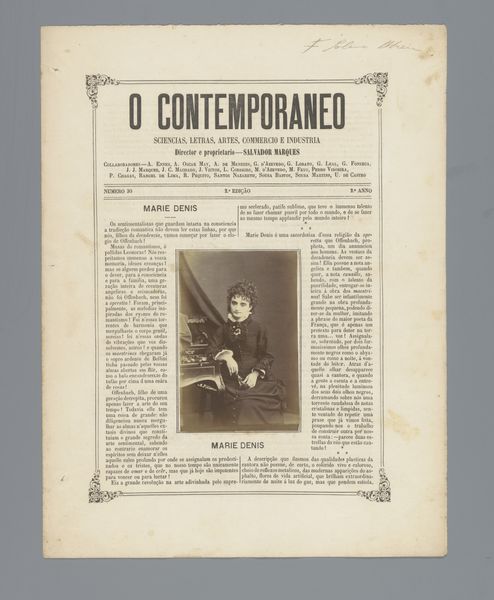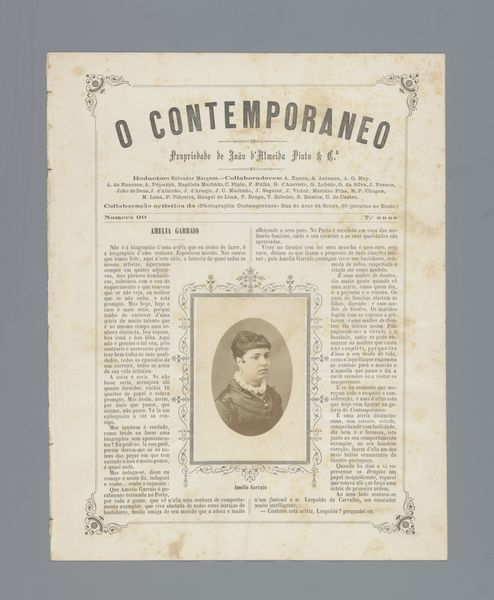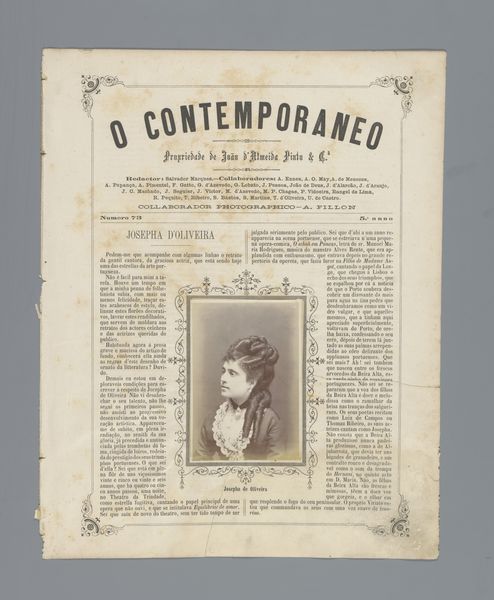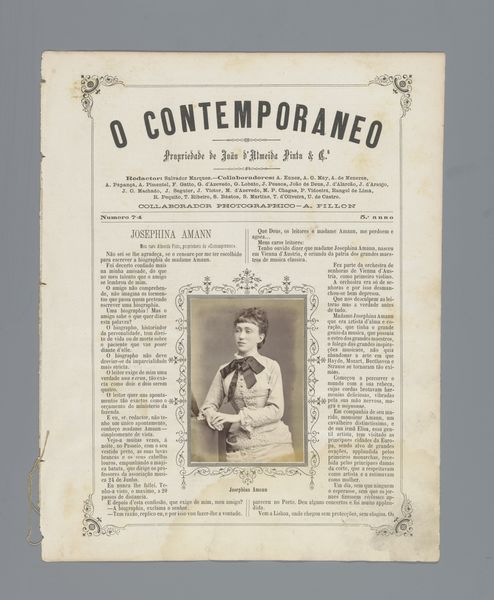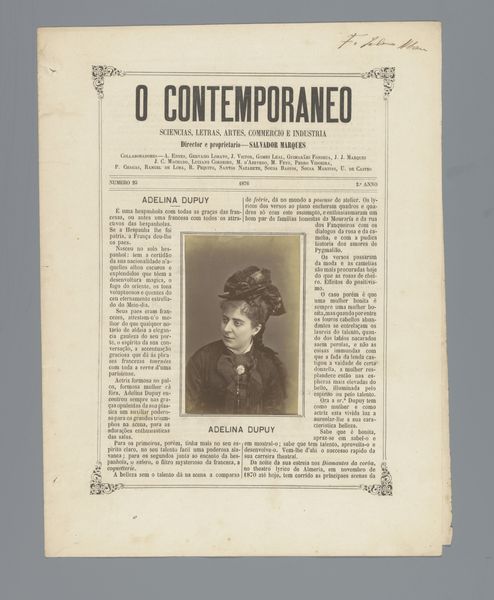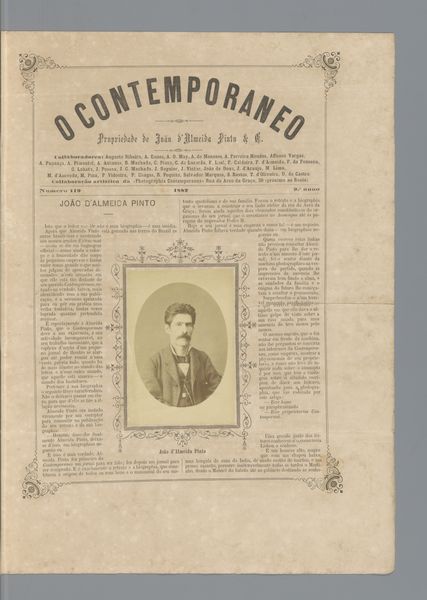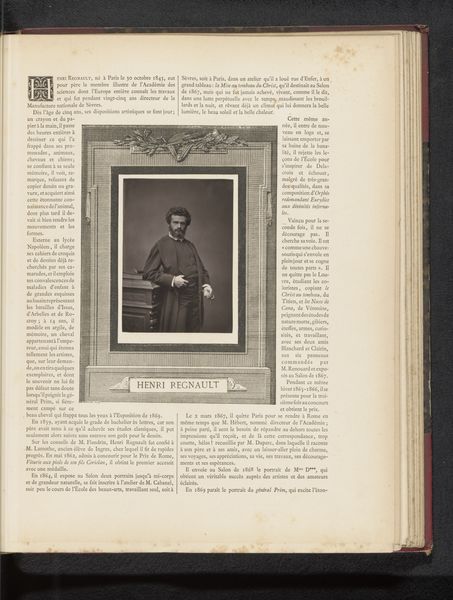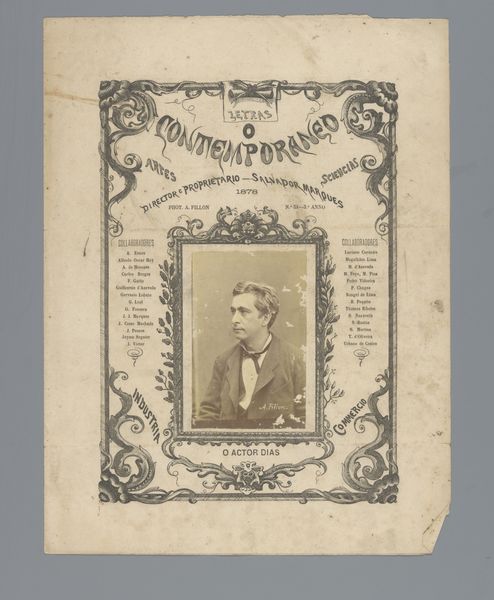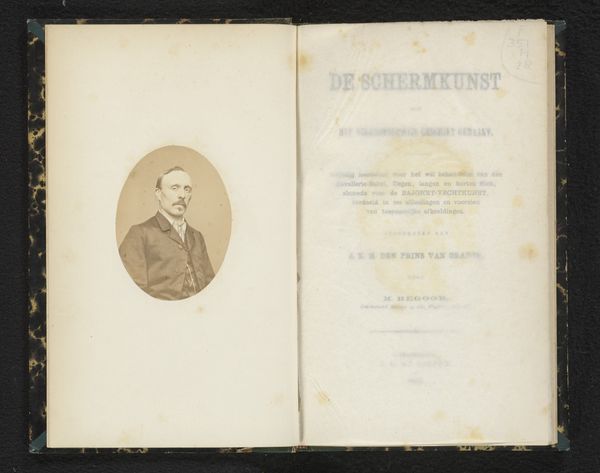
print, photography
#
portrait
#
still-life-photography
# print
#
photography
Dimensions: height 320 mm, width 240 mm, height 107 mm, width 70 mm
Copyright: Rijks Museum: Open Domain
Editor: This is "O Contemporaneo," an undated print with a photographic portrait by Alfred Fillon, placing us sometime before 1875. The man depicted exudes confidence, almost a theatrical presence. What catches your eye in this portrait? Curator: Immediately, I'm drawn to the careful composition—the sitter is framed within the broader context of the publication itself. This isn't just a portrait; it's an advertisement, a statement about cultural capital and intellectual life. Notice how the typeface around the image both defines and enhances the subject, reinforcing his importance through the symbolic weight of the printed word. Consider, what does it mean to be ‘contemporary’ at that moment, as captured through this specific blend of image and text? Editor: I see what you mean. The text elevates the image, giving it authority. How would this image resonate with viewers in the 1870s? Curator: For a nineteenth-century audience, a photograph held a different kind of magic than it does for us now. It was a relatively new technology, and so had an element of wonder, a sense of truth. Putting this image on the page of 'O Contemporaneo' would imply he's one of the important figures contributing to the intellectual life of the time. This specific combination of mediums indicates the increasing synthesis between text and image at this time. Why might Fillon be purposefully integrating portraiture into publication during this moment? Editor: That's a clever perspective. I hadn’t thought of the novelty of photography lending prestige to the sitter and the periodical itself. I guess the printed frame turns the person into a symbol of the publication's ideas and ambitions. Curator: Exactly! So much is expressed through this seemingly simple image, and the dialogue it creates across time and cultures.
Comments
No comments
Be the first to comment and join the conversation on the ultimate creative platform.
